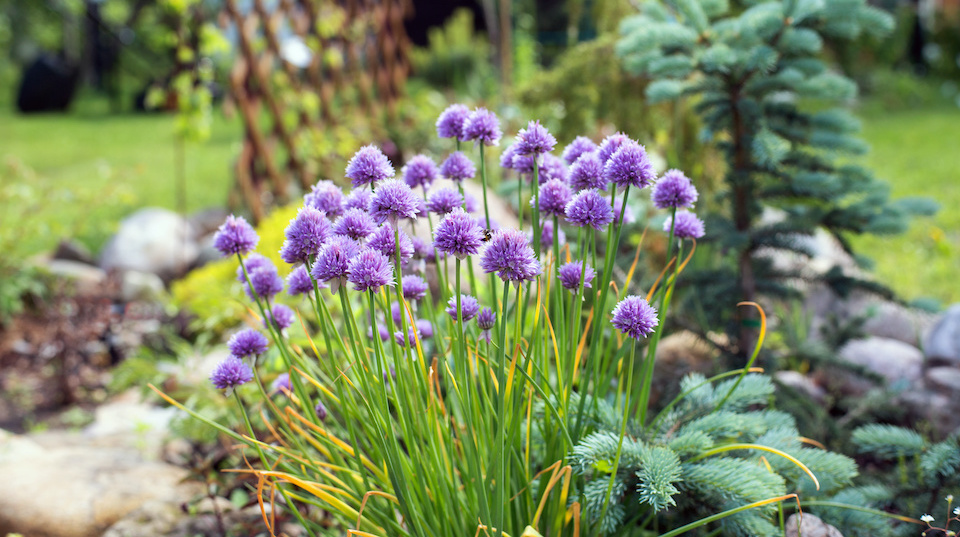There has long been an incorrect assumption in the garden community that ornamental plants are the only ones that can look good, while vegetables and fruits are strictly for practical purposes. Essentially the opposite of a mullet, gardens are viewed as “party in the front, business in the back”. Not everyone is lucky enough to have a large front yard for flowers and ornamental purposes and a spacious backyard that can be reserved for edible crops, however. And some people feel like they have to choose one or the other…practicaltiy or beauty. Thankfully, recent breakthroughs have turned this misconception on its head, and a new practice is rising in popularity…edible landscaping.
What is edible landscaping?
Edible landscaping is the idea that fruit, vegetables, and herbs and be both attractive and functional. With this garden strategy, edible plants are combined with non-edible plants for an appealing, fragrant, and delicious landscape that breaks down the barriers between food and flowers once and for all.
How to create a beautiful edible garden
Take stock of your garden
Shrubs and ugly foliage plants have absolutely no place in an edible landscape. They are simply taking up valuable garden-space that could be used by something more attractive and useful. Search through your garden for any unimpressible perennials or shrubs that need to come out and spend some time removing these plants from your garden. Be sure to dig up the roots, save the transplants, and share with friends so that the plants don’t go to waste.
Note down areas that need a little something extra to help the garden feel full and lively. Blueberries or raspberry bushes make excellent substitutions for shrubs since they are low maintenance and have a similar growth pattern.
Choose foliage plants
Choose plants with foliage that remains attractive throughout the growing season. Herbs are a great option since they can serve as a groundcover and easily blend into the existing landscape. Plant mint and lemon balm in plastic containers buried under the ground to keep them from taking over. Basil, sage, and fennel are particularly attractive herbs that add movement and an intoxicating aroma to your garden.
Minimize your lawn
Though the front lawn is often the prized accomplishment of many surburbanites, it may be time to go away from the water-heavy, time-consuming yard and create a landscape that is more sustainable and eco friendly. You don’t have to rip up the entire yard right away, but maybe start by expanding your garden by a few feet and building out from there.
Move away from rows
One of the worst things you can do with an edible garden is attempt to create something formal and symmetrical. There are no straight lines in nature, so keep that in mind as you creatively expand your garden. Keep it tidy and follow spacing requirements, but plug in plants where needed to fill holes and shade out weeds. This will minimize maintenance and upkeep and will give your garden an appealing, homey organized chaos.
Choose the correct plants
Vining beans are perfect to trail over a fence, while short plants like lettuce and cabbage can be grown as edging. Use large, bushy peppers towards the back of the bed and add in decorative cages for cherry tomatoes. Don’t forget about fruit and berries and edible flowers such as geranium and nasturtium.
Other plants that look great in an edible garden:
Vegetables
- Artichoke
- Beans
- Beet
- Broccoli
- Carrot
- Egg plant
- Hot pepper
- Kale
- Kohlrabi
- Leek
- Lettuce
- Onion
- Peas
- Radish
- Rhubarb
- Sweet pepper
- Swiss chard
- Tomatillo
Fruit
- Apple
- Blueberry
- Cherry
- Grape
- Kiwi
- Lemon tree
- Peach
- Pear
- Plum
- Strawberry
Herbs
- Basil
- Chive
- Lavender
- Lemon verbena
- Lemon balm
- Mint
- Oregano
- Parsley
- Rosemary
- Sage
- Thyme
Challenges
Pests
Keeping deer, rabbits, and dogs away can be one of the greatest struggles of an edible landscape. Try planting marigolds amongst your plants to help deter deer and rabbits and fence in your yard, if possible. Dogs can be trained to stay out of the garden and should have a designated area to use the bathroom.
Water
As long as you ensure that you have fertile, well-draining soil in your garden, your plants should be able to stay on the same watering schedule. However, take frequent trips throughout your yard, and if you notice certain plants are a little wilted or unhappy, give them some extra attention and water.
Light
Most vegetables and fruits require six to eight hours of direct sunlight, so don’t plant them in the shady corners of your garden. Reserve these spots for shade-loving flowers or small trees.
-Susan Patterson



